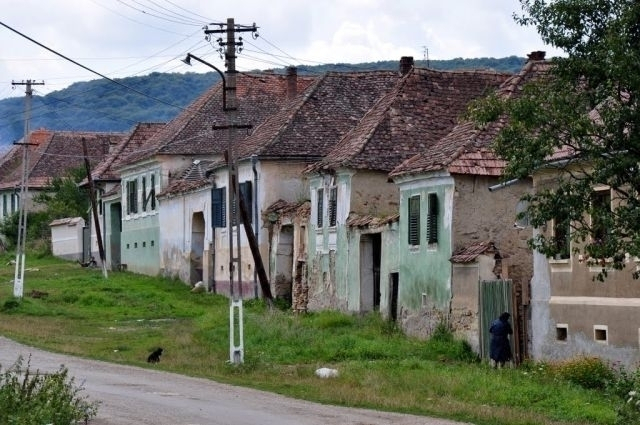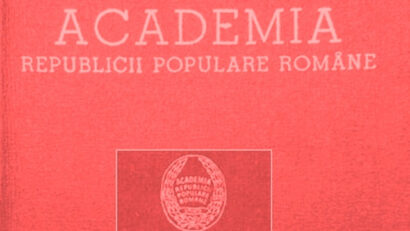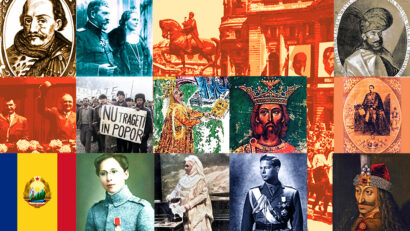Political Surveillance in the Romanian Village
Political surveillance and supervision in Romania between 1945 and 1989, during the Communist regime, was one of the pillars of terror that propped up its existence

Steliu Lambru, 26.04.2021, 13:22
Political surveillance and supervision in Romania between 1945 and 1989, during the Communist regime, was one of the pillars of terror that propped up its existence. The Securitate, the militia (as the police was named then), and networks of informers were another triangle of evil that sent innocents to prison, and persecuted people for political opinions and because they were protecting their property and the way in which they earned a living. The political surveillance and repression apparatus was ubiquitous, and perpetrated innumerable crimes, including murder.
Political surveillance during communism has been discussed mostly in reference to cities. In large urban areas, where living conditions were worse, and the potential for rioting was greater, the regime concentrated the most resources. As the city was inhabited by a greater diversity of people, including workers, with a greater ability to organize, surveillance was felt more acutely.
The rural world, however, was not spared from the presence of the surveillance and repression apparatus. In fact, the history of Communist surveillance and repression starts in the rural environment, and was a constant presence right up until 1989. The Communist state started its campaign of terror in the countryside, because that is where the resistance was formed, by former soldiers and by peasants resisting collectivization. There they needed informers to find out who was a member of the armed resistance in the mountains, who were the peasants that supported them, and which were the networks by which the partisans and their supporters in cities and villages communicated. Rural surveillance had a major importance. The history of anti-communist resistance mentions the activity of informers as the main reason for the elimination of partisan groups. The common graves that have been uncovered reveal that dozens of peasants were shot as a group in remote areas.
Historian Gheorghe Miu researched the surveillance and repression apparatus in the area of Buzau. He believes that the manner in which it was run their can be considered to be the same all over the country:
“These militarized structures of the Communist regime acted in the rural areas, in Socialist villages, using residents in militia stations. These residences of the Securitate had well organized intelligence structures, with safe houses, informers, a structure revealed in many documents. A Securitate residence was a source of intelligence. It supervised the networks of informers. The resident, most often, was the police station chief, he acted on behalf of the Securitate officer in charge of the area. He kept in touch with informers, conveying intelligence to the Securitate officer, usually referred to as an operative Securitate worker.”
A surveillance and repression apparatus could not function without informers. They were recruited from all walks of life, and had a variety of motivations. Some were victims of blackmail, but others, archives reveal, had material gains. They or the members of their families were given coveted jobs, others got better homes, greater salaries and bonuses, others were allowed to travel abroad. However, in the rural areas these incentives were lacking, and informers worked mostly out of fear. Gheorghe Miu said that they came from all social strata of the village:
“I discovered countless sources of intelligence who had a cover name. They came from all social strata. They were generally those closest to the Securitate and militia targets, they were usually neighbors, of the same social status. I also discovered that many of the sources were teachers. There was also the case of a state bank worker, who was being sent to villages to popularize state banking among the peasants. However, he had a very specific intelligence task. I could not uncover any material advantages as an incentive. The militia and Securitate used fear in villages, instituted terror. People were called to the station to provide information under threat, though some volunteered.”
Historian Gheorghe Miu also has the example of a peasant who suffered for his opinions, namely his own paternal grandfather:
“One case study is my grandfather, Vasile Miu, a peasant who opposed collectivization. He stayed out of collectives until 1989, but there were consequences. He had a dossier opened on him, as well as a criminal case. My grandfather was a middle class peasant with 9 hectares of land, listed as a reactionary, an enemy to the Communist regime. Using as a pretext a letter sent by Vasile Miu to the chairman of the Peoples Council of his village, one of the artisans of collectivization in Padina, Buzau County, the Securitate made him a target of surveillance and criminal prosecution. It was a real ordeal. Even though Vasile Miu was not classified as a political prisoner, he was locked up for 3 months for selling at the fair a horse that had been impounded by the Communist tax system as payment for agriculture contributions.”
The surveillance and repression apparatus during Communism worked as brutally in villages as it did in cities. Many peasants still carry the memories of the work of the Securitate in their villages.





























